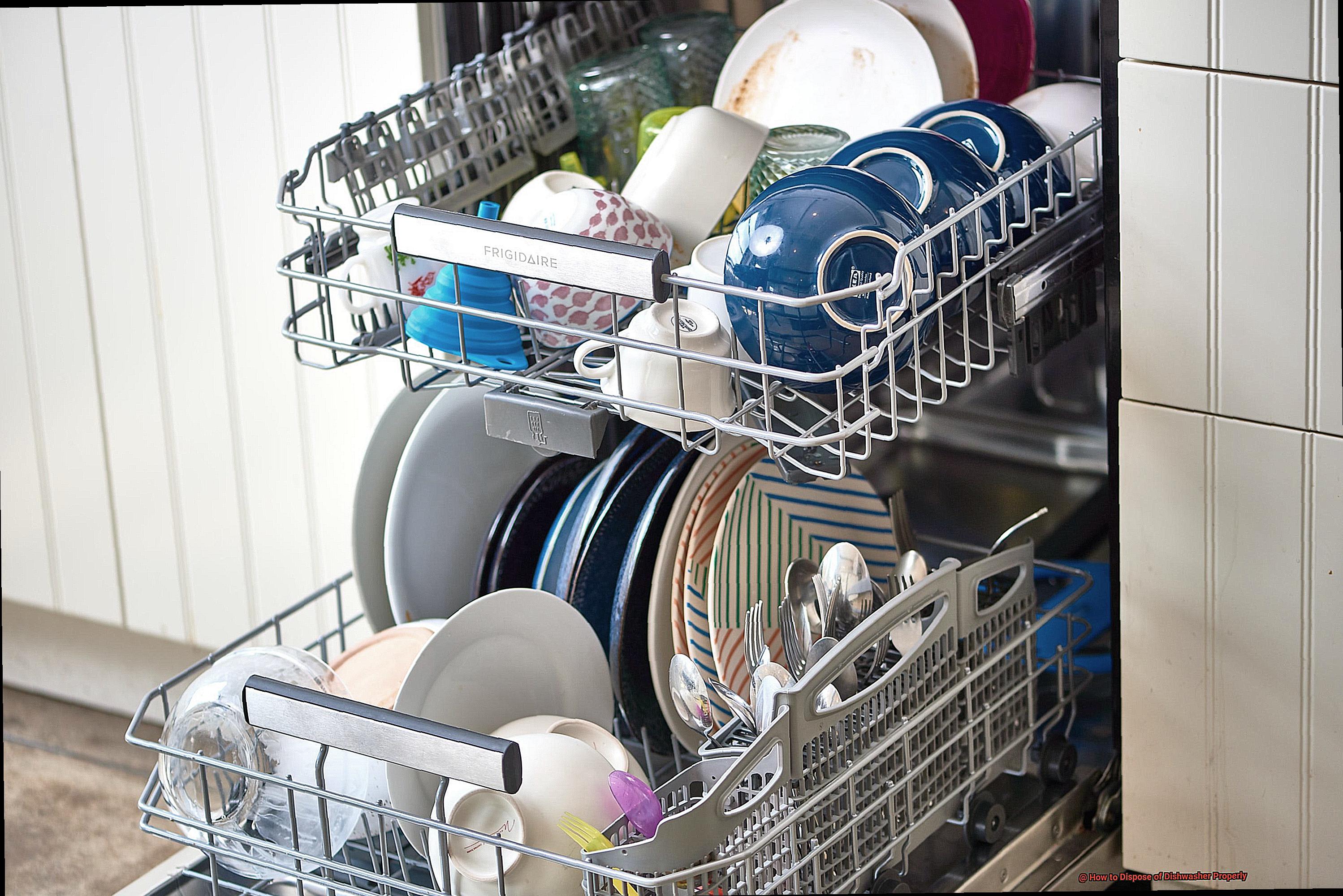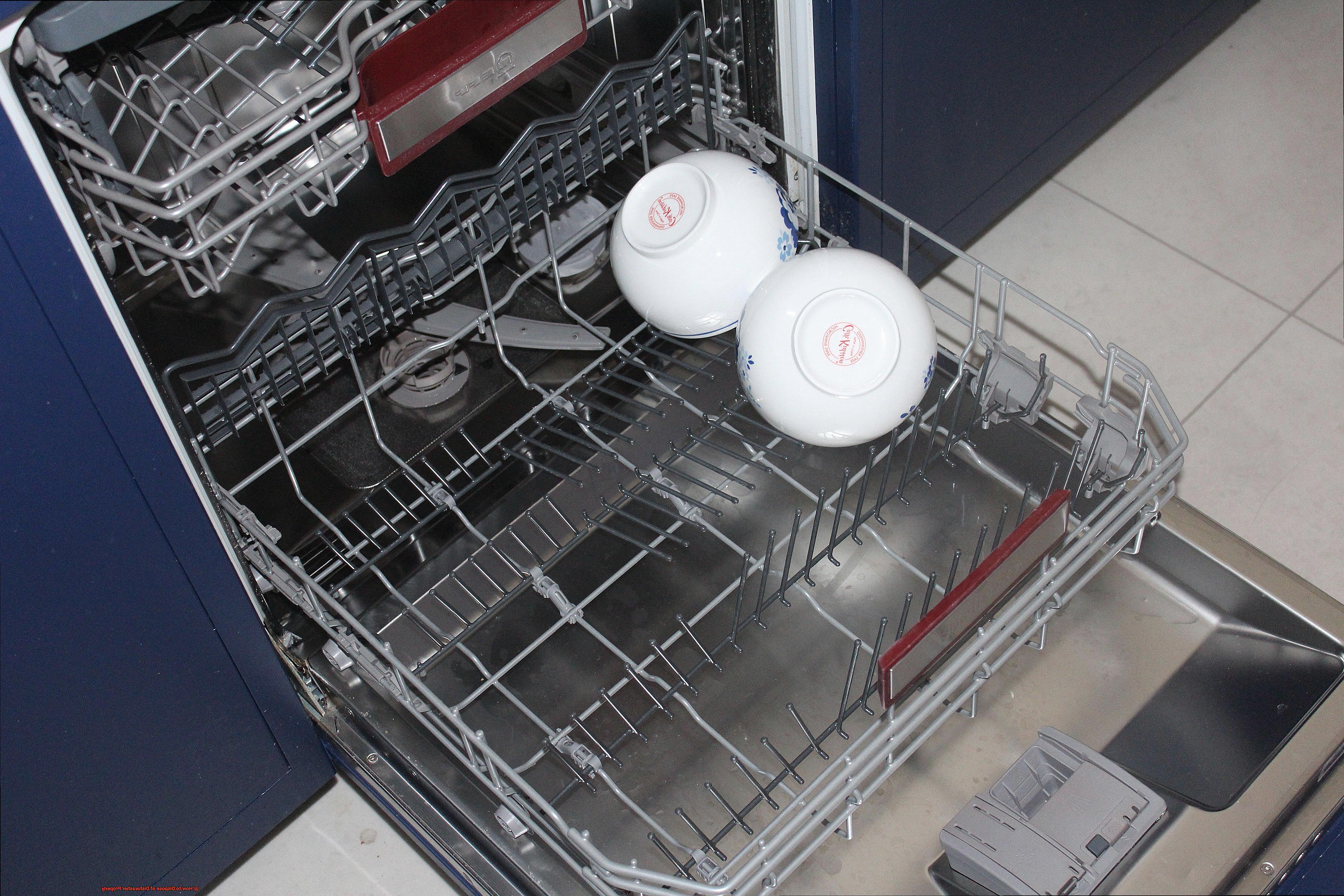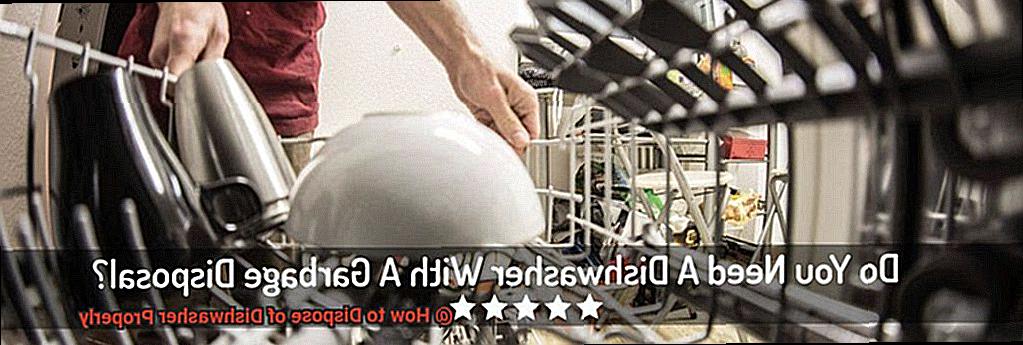Are you tired of your old dishwasher taking up valuable space in your garage or kitchen?
Perhaps it’s time to upgrade to a new and improved model. But before you do, you need to properly dispose of your old dishwasher.
Don’t just dump it in a landfill. There are several environmentally friendly ways to get rid of your old appliance.
In this blog post, we’ll explore all the options available to you. We’ll cover everything from recycling programs to donation policies, and even the benefits and drawbacks of using a reputable junk removal company.
So, if you’re ready to learn how to get rid of that old clunker while still being kind to the environment, keep reading.
Check with Local Waste Management or Recycling Center
Contents
If you’re looking to dispose of your old dishwasher, it’s important to do so with the environment and your health in mind.
Rather than simply throwing it out with the rest of your garbage, consider contacting your local waste management or recycling center for guidance. These centers are equipped to handle heavy appliances like dishwashers and can provide you with valuable information on how to properly dispose of them.
Depending on where you live, there may be specific regulations or guidelines that dictate how appliances such as dishwashers should be disposed of. Not to worry.
Your local waste management or recycling center can give you all the information you need on any such regulations that apply in your area. They may even offer specialized services or initiatives designed to make it easy and convenient for residents to recycle their old appliances.
When you contact your local waste management or recycling center, you’ll also learn about any fees or costs associated with appliance disposal. Some facilities charge a fee for accepting large appliances like dishwashers, so it’s important to find out what those costs are before proceeding.
But there’s more. Your local waste management or recycling center can also help you prepare your dishwasher for recycling.
They can advise on how to remove any hazardous materials like refrigerants or chemicals that may be present, ensuring both your safety and that of the environment. Before disposing of your dishwasher, remember to disconnect the power source and any plumbing connections.
Finally, be sure to secure the dishwasher properly before moving it to the garbage disposal center or private disposal company to avoid any damage or accidents during transportation.
Contacting a Private Company for Disposal
Tossing out your old dishwasher can be a headache, but contacting a private company to dispose of it can alleviate the burden.
It’s crucial to choose a trustworthy business that follows proper disposal procedures, though. Think of it like going to your favorite restaurant.
You want to ensure they follow the recommended food handling and sanitation guidelines to protect your health. Similarly, when selecting a private company for dishwasher disposal, you should verify that they follow the correct protocols to safeguard the climate and your health.
Some private companies may recycle or refurbish appliances, while others may send them to a landfill. It’s crucial to investigate their specific disposal methods and ensure they match with your personal values and beliefs.
We all want to do our part in saving the planet, after all. When choosing a private company for dishwasher disposal, remember that cost is also an important consideration.
Some businesses may charge a fee for their services, while others may provide them at no cost. Before making a final decision, it’s vital to compare prices and services offered by different companies.
However, remember that selecting a reputable company with fair pricing and shared values is critical.
Preparing the Dishwasher for Disposal
If your trusty old dishwasher is on its last legs, it’s important to prepare it properly for disposal.
Just like a chef prepares their ingredients before cooking a meal, you need to prepare your dishwasher before handing it over to the disposal experts. First things first, unplug your dishwasher from the electrical outlet.
This is critical for safety reasons, but also ensures that electricity isn’t running through the appliance while you’re trying to move or dismantle it. Think of it like unplugging a toaster before cleaning it; you don’t want to risk getting an electric shock.
Next, turn off the water supply to the appliance. This prevents any water from leaking out during the recycling process.
Just like turning off the tap after washing dishes, you don’t want any extra water dripping onto your kitchen floor. Disconnect the dishwasher’s drain hose from the sink or garbage can, but make sure you have a bucket or container on hand to catch any water that may still be in the hose.
It’s similar to pulling a wine bottle cork; you don’t want any spills or mess. Once these initial steps are complete, it’s time to remove any remaining parts of the dishwasher, such as racks, silverware holders, and spray arms.
Make sure you identify these parts so they can be properly disposed of or recycled. Think of it like taking apart a puzzle; you need to keep track of all the pieces.
The dishwasher will be dismantled by removing screws and other fasteners that hold the appliance together. To ensure you’re dismantling it correctly, consult your owner’s manual or do some online research beforehand.
Once dismantled, dispose of your dishwasher according to your local rules. This may require transporting it to a recycling center or organizing a special pickup with your local waste management company.
It’s just like making a meal; you need to have all the ingredients ready to go before starting to cook.
Removing Water and Detergent from Machine
When it’s time to say goodbye to your dishwasher, you want to make sure you do it right.
Removing water and detergent from the machine is an essential part of the disposal process, and we’re here to guide you through it. First things first, safety is key.
Before you begin, cut off the power supply to your dishwasher and unplug it from the electrical outlet. Safety is paramount when working with appliances, so don’t skip this step.
Next up, it’s time to get rid of any remaining water in your dishwasher. You can use a bucket or towel to soak up any liquid left in the bottom of the machine.
It’s crucial to wear gloves to protect yourself from any chemicals or bacteria that may be present. Once you’ve removed all the water, it’s time to give your dishwasher a deep clean.
Use a damp cloth and mild detergent to wipe down the interior thoroughly. Make sure you don’t miss any food debris or residue on the walls, racks, or spray arms.

Now it’s time for the high heat cycle without any dishes inside. This step is critical to remove any remaining detergent or chemical residue from your machine and sanitize it before disposal.
Last but not least, let your dishwasher air dry completely before proceeding with its recycling. Remember that proper disposal of both your dishwasher and its detergent is vital.
Contact your local waste management facility for guidance on how to dispose of detergents safely. In conclusion, removing water and detergent from your dishwasher is a crucial step in properly disposing of the machine.
Disconnecting Power Supply and Plumbing Connections
When it’s time to bid farewell to your trusty dishwasher, safety must come first.
Disconnecting the power supply and plumbing connections is crucial in ensuring a safe and responsible disposal process. Think of it as unplugging a computer before moving it – you don’t want to risk damaging the unit or getting an electric shock.
So, why is it so important to disconnect the power source and plumbing lines?
Firstly, it’s all about safety.
By unplugging the dishwasher and shutting off the water supply, you’re minimizing the risk of injury during the disposal process. You definitely don’t want to electrocute yourself or flood your kitchen while trying to get rid of your dishwasher.
To disconnect the power supply, start by unplugging the dishwasher from its electrical outlet. If you’re not sure how to safely do this, refer to the manufacturer’s instructions or seek assistance from a professional.
It’s always better to be safe than sorry. After successfully unplugging the dishwasher, move on to disconnecting the plumbing lines.
Disconnecting the plumbing connections involves turning off the water supply and disconnecting any hoses that link the dishwasher to your plumbing system. If you’re unsure of how to do this safely, consult with the manufacturer’s instructions or seek advice from a specialist.

You don’t want to accidentally flood your kitchen or cause any damage during the disposal process.
Once you’ve disconnected both the power supply and plumbing connections, it’s time to prepare your dishwasher for disposal.
This may include removing any remaining parts or accessories such as racks or hoses and disposing of them separately.
Additionally, be sure to properly label and bag any hazardous materials like batteries or chemicals before disposing of them.
vDr4iqfDpMo” >
Removing Food Waste if Necessary
Firstly, start by emptying the dishwasher’s filter, which is responsible for catching large food particles and preventing them from clogging the drain.
Depending on the make and model of your dishwasher, consult the manual or perform a quick online search to remove the filter correctly.
Rinse the filter thoroughly under running water and use a soft brush to gently scrub away any stubborn residue before letting it dry completely. Next up, check for any clogs or buildup in your dishwasher’s spray arms.
These arms are responsible for distributing water throughout the appliance to clean dishes effectively. Any obstructions in the spray arms can prevent them from performing their job correctly.
To clean them, remove the arms from the dishwasher and rinse them under running water.
Use a toothpick or small brush to remove any buildup that may be clogging the spray arm’s holes.
Lastly, give your dishwasher a thorough cleaning cycle with a specialized dishwasher cleaner. This will help eliminate any remaining food particles or buildup that may be lingering inside your appliance.
Follow the instructions on your chosen cleaner and run the cycle without any dishes inside.
By taking these simple steps to remove food waste from your dishwasher before disposal, you can rest assured that your appliance stays clean and hygienic.
Also Read: Can You Recycle Ice Packs?
Conclusion
In conclusion, disposing of your old dishwasher in a responsible manner is essential for protecting the environment and your well-being.
Fortunately, there are several options available for getting rid of it safely, including recycling programs, charitable donations, and private junk removal companies. However, it’s crucial to do your research and choose a reputable firm that adheres to proper disposal protocols.
Before discarding your appliance, you must prepare it by disconnecting its power source and plumbing connections.
Additionally, remove any remaining parts or accessories and dispose of food waste appropriately.
Hazardous chemicals such as detergents should be disposed of separately to prevent environmental damage.
It’s also wise to check with your local waste disposal or recycling center for any regulations specific to your area.





